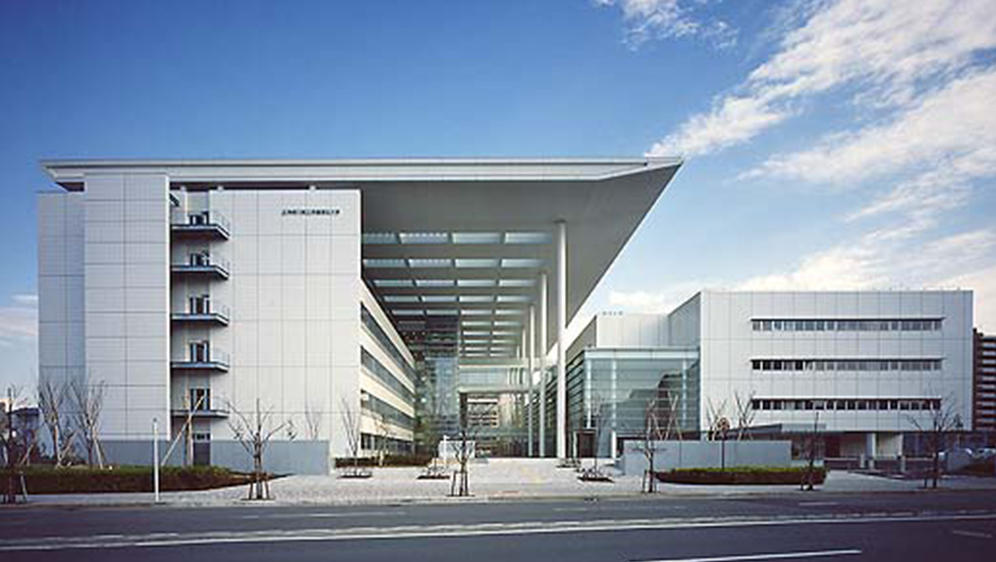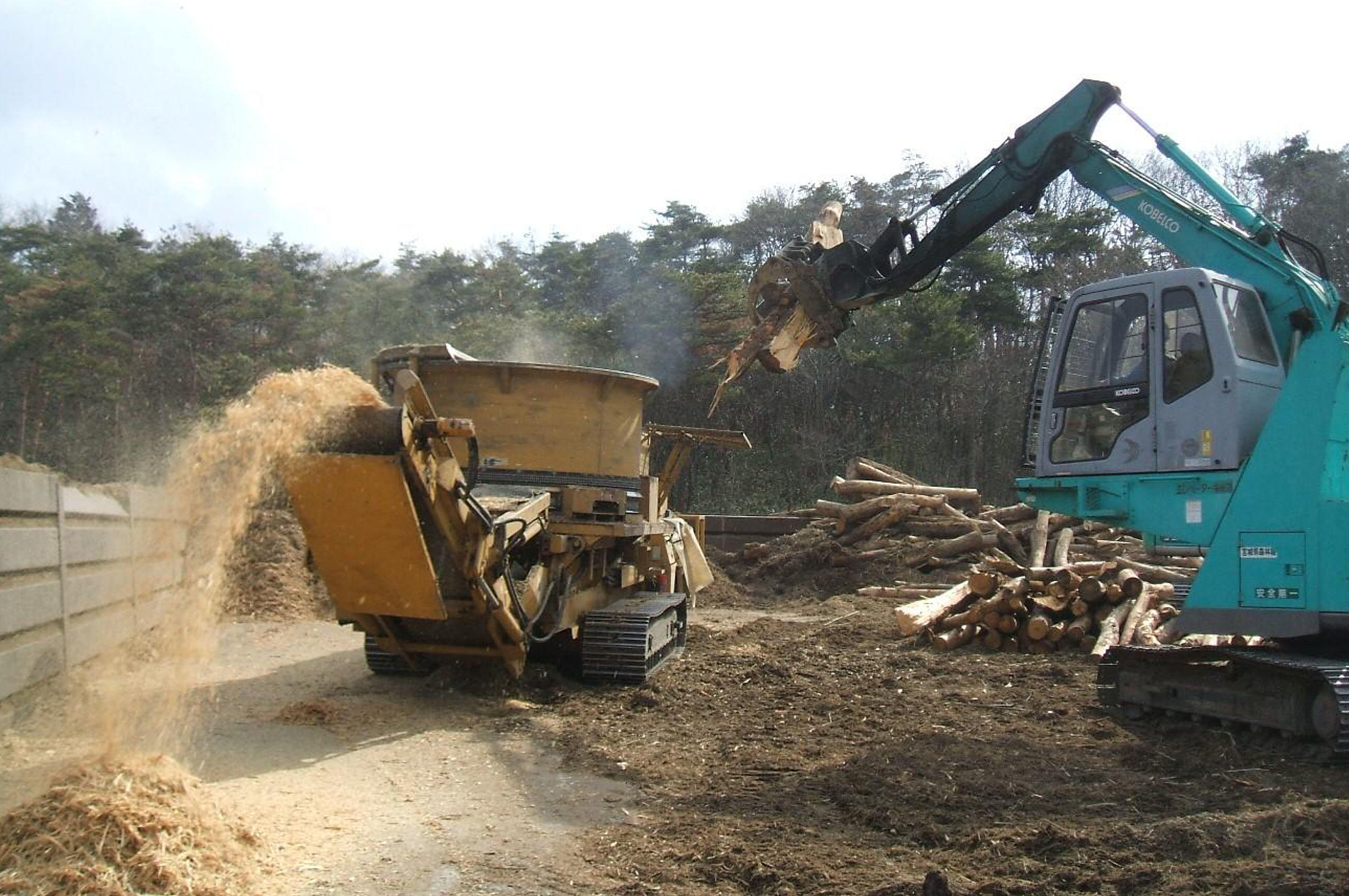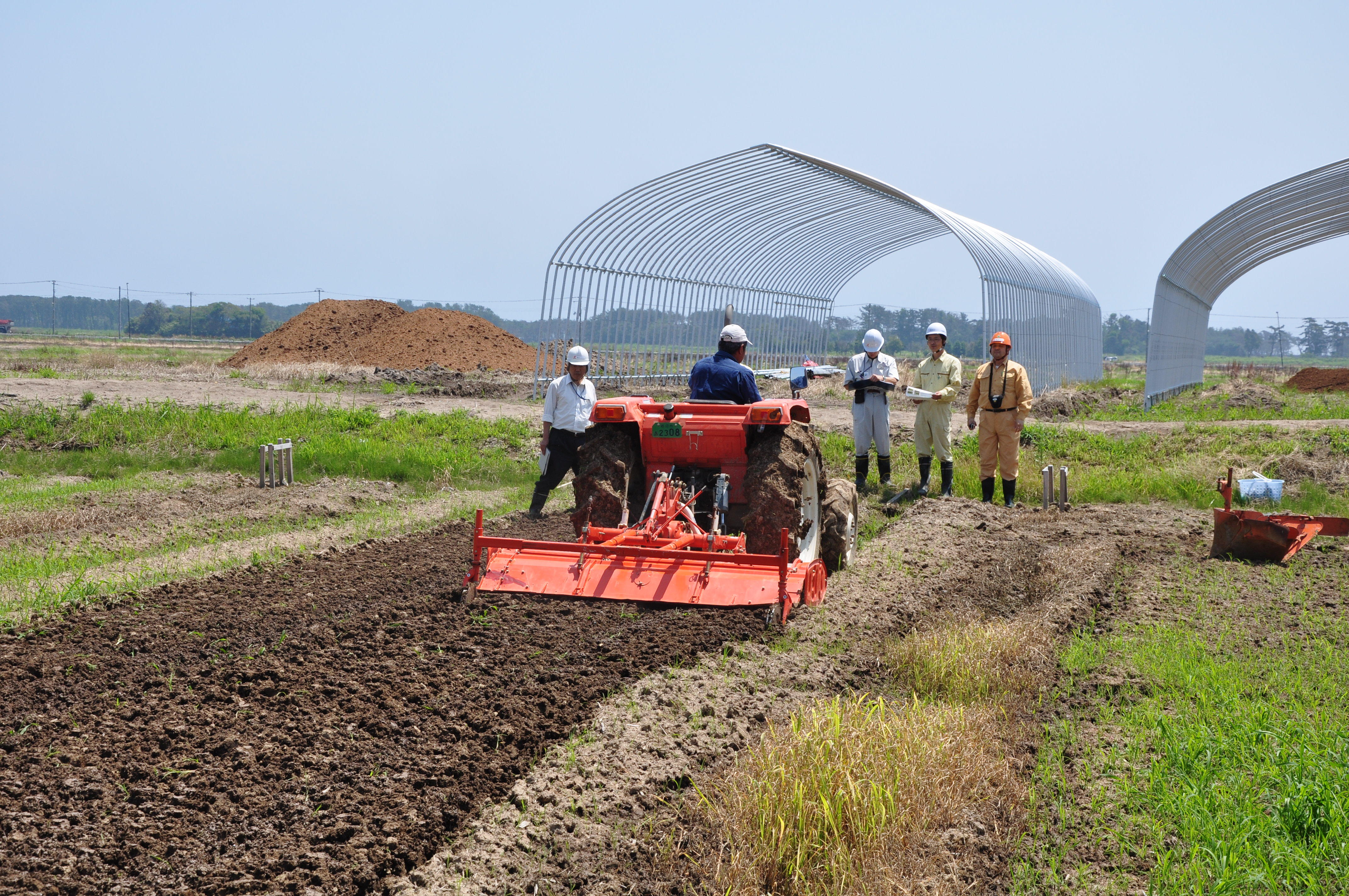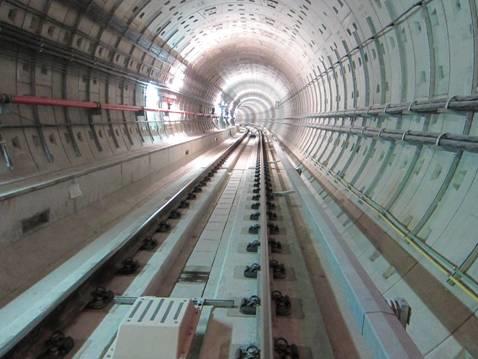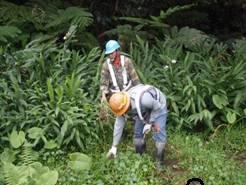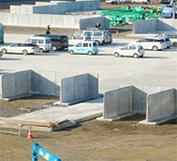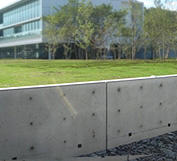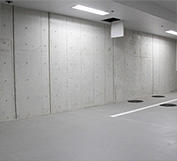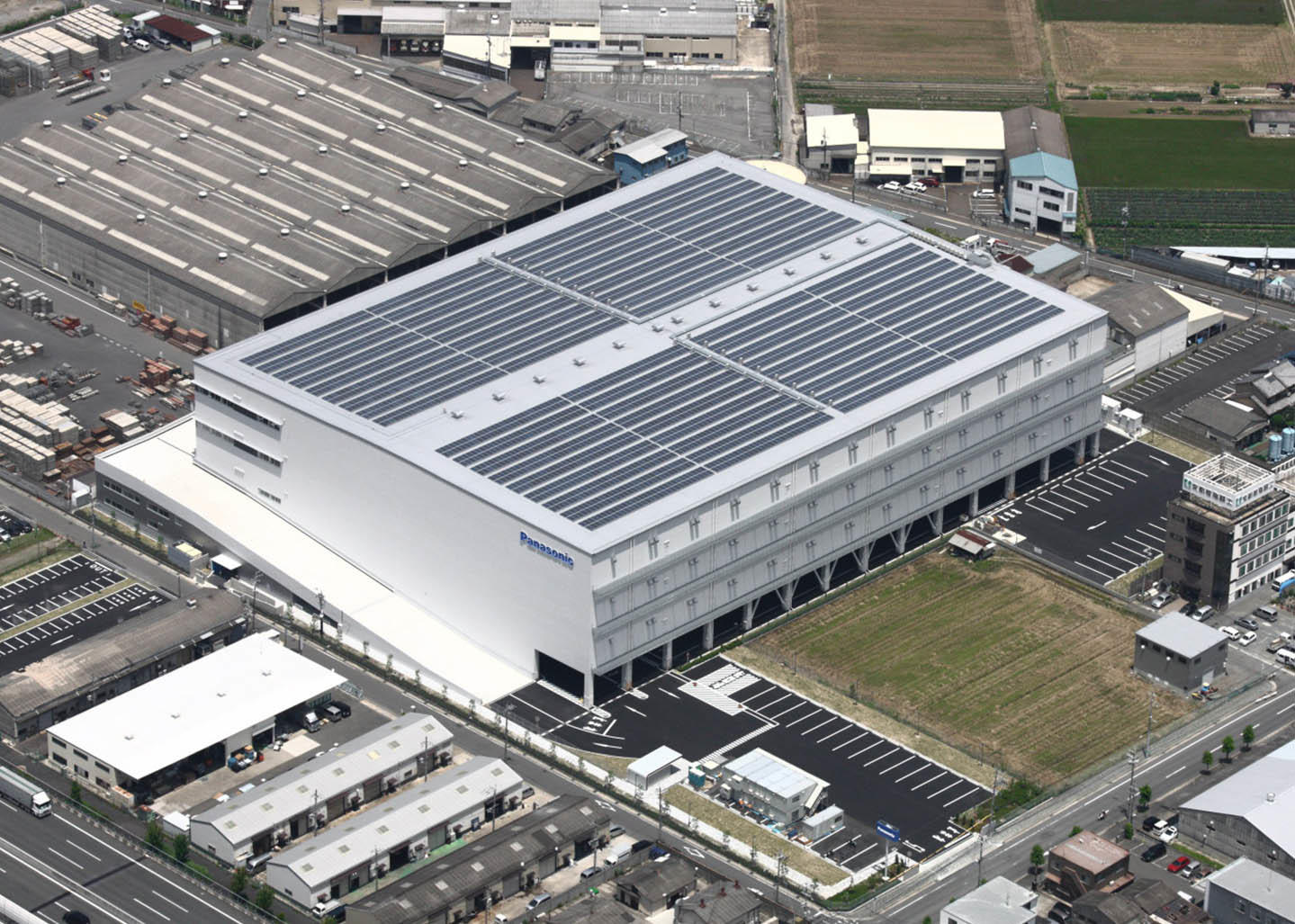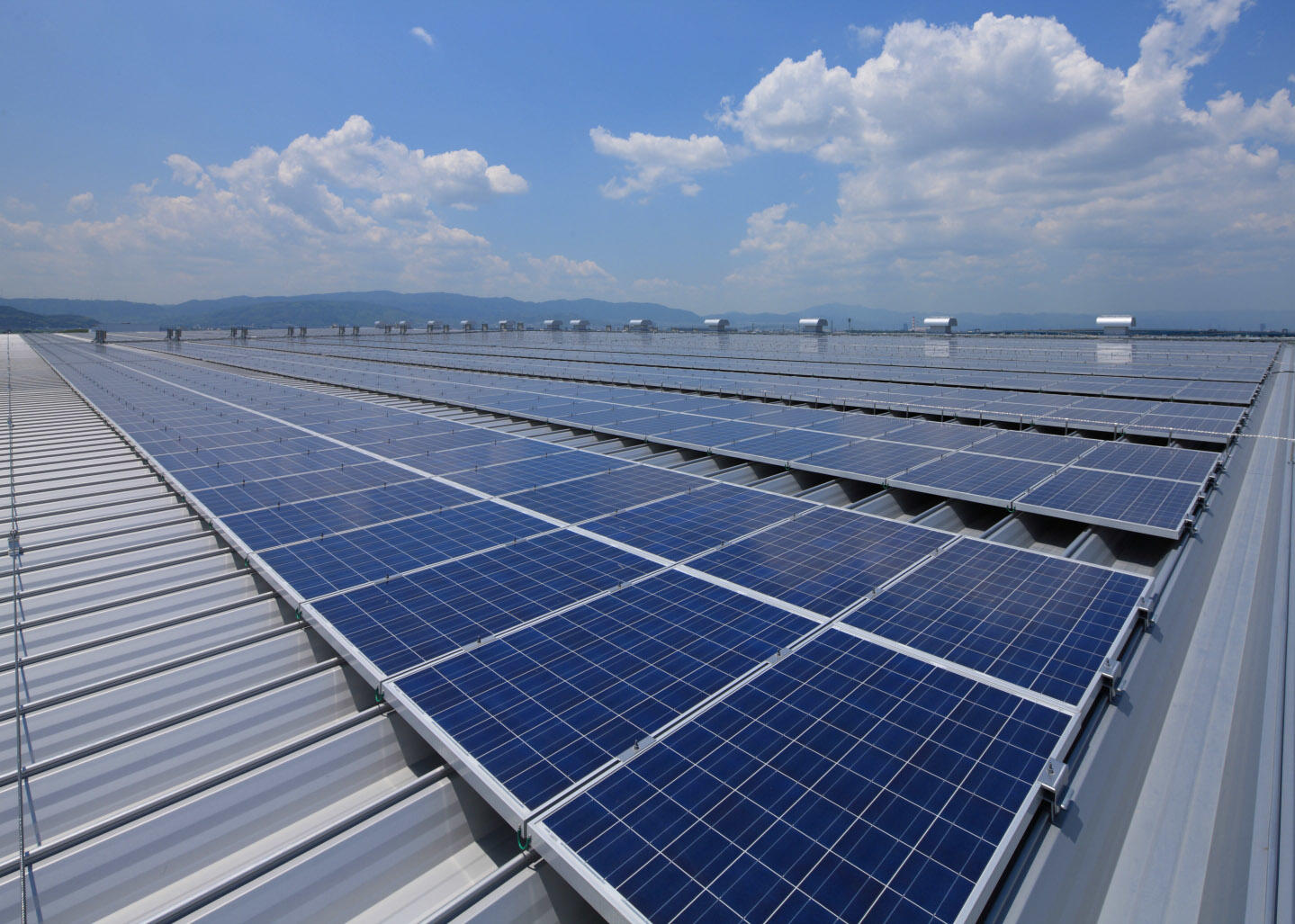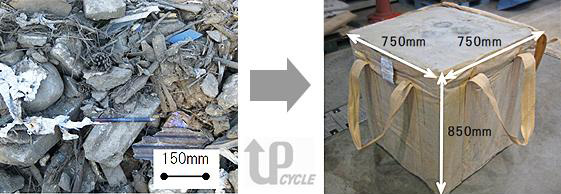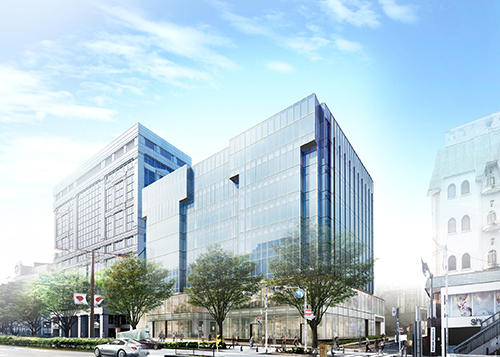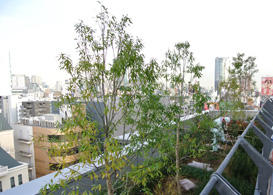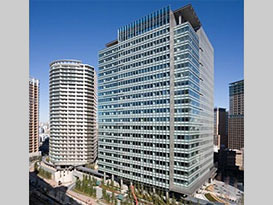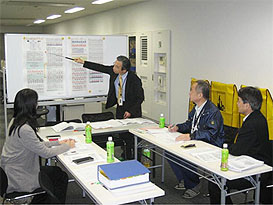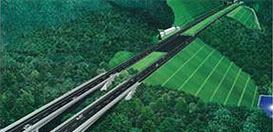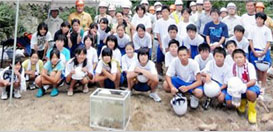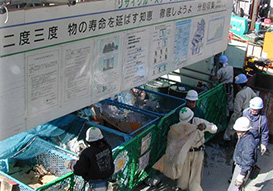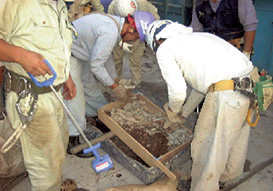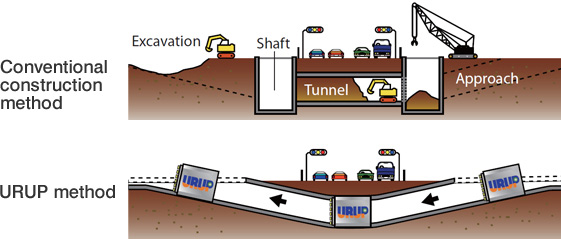Environmental Awards
We have established Obayashi Environmental Awards in FY2010.3. This award goes to projects of Obayashi and our group companies, witch has outstanding environmental efforts and remarkable achievements that can be exemplary to other projects.
Below are some of awarded projects.
8th Obayashi Environmental Awards (January 2017)
Project reducing environmental impacts
Reduction of construction debris
Disaster stricken district project
Eliminating form work waste
Project reducing environmental impacts for more than ten years at Kanagawa University of Human Services
We are working with Kanagawa Prefecture to reduce environmental impact at Kanagawa University of Human Services, our first major domestic private finance initiative (PFI) completed in 2003.
By employing energy-saving methods in light fixtures, air conditioning, sanitation and other equipment, and by making appropriate adjustments through data analysis using a building energy management system, the project has achieved a high level of energy savings compared to similar buildings. Surveys are also conducted of facility users as part of maintaining comfort and functionality. The project has been commended for maintaining its efforts to conserve energy through a public-private partner-ship (PPP) that has continued for more than a decade.

Reduction of construction debris at Route 357 Tokyo Port Tunnel Project, Phase 2
We have re-planned the tunneling construction method by making the shield machine drilling section longer, while making the open-cut method section shorter.This means it produces less construction debris, reducing around 1.1million m³ of debris.
We have also used concrete and blast furnace cement concrete made of recycled industrial byproduct, and reduced around 2,000t of CO2 emissions.
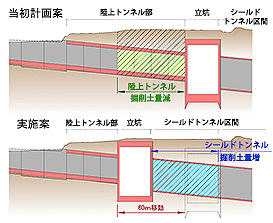
Large-scale civil engineering project at disaster stricken district
This project utilized ICT to reduce CO2 emissions of construction surplus soil transport vehicles in area affected by tsunami during Great East Japan Earthquake.
We achieved efficient surplus soil transportation by using GPS smart phone transportation control systems. For land filling, we have introduced GPS compacting management system to count the number of times the construction machinery has pressed the soil.
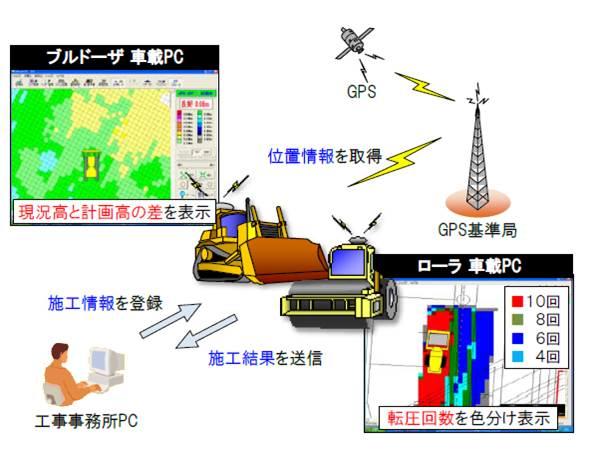
Eliminating form work waste at Awaji-cho, Osaka project
This residential building project used pre-casted LRV columns and
beams and abridged the process of concreting work, eliminating the
use of boards to form concrete.
We used the best of the underground framework of the former
building which we have built as under pinning walls, and reduced
about 1,000m³ of sludge emission.
We also used movable emission recycling carts, since we did not have
large space to place industrial waste containers.
These efforts were recognized to award Ministry of Land,
Infrastructure, Transport and Tourismʼs Prize of FY2016 3R (Reduce,
Reuse, and Recycle) promotion award.
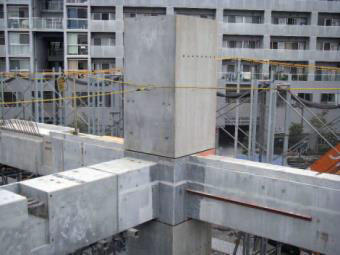
7th Obayashi Environmental Awards (January 2016)
Chloroclean development project
Project using recycled energy
Ecosystem protection
Chloroclean development project
Chloroclean is our proprietary bioremediation technology for cleaning up soil and groundwater that is contaminated with volatile organic compounds (VOCs) without any digging. Injecting the microbial nutrient Chloroclean into the VOC-contaminated ground activates microorganisms living in the soil, which decompose and purify the VOCs. Made from food additives, Chloroclean is very safe. It also does a superior job activating microorganisms. After VOCs are decomposed and puri-fied, activated microorganisms decline and the ground returns to its normal state. This eco-friendly, low-cost method has been used in 23 projects to date.

Construction project using recycled energy
The Naoetsu To-unryo corporate residence of INPEX
CORPORATION (design and construction by Obayashi;
Joetsu City, Niigata Prefecture) has a key role in the
Company's BCP, and was therefore designed to meet the
requirements of the BCP and to have energy saving
features.
Specifically, the facility is equipped with a BCP-compatible
micro-grid to enable integrated control of diverse energy
sources in addition to a standard commercial power
supply, such as solar power generation, a gas
cogeneration system, emergency diesel generators, and
lithium-ion batteries. This enables it to cope with various
disaster scenarios, including interrupted power or gas
supplies.
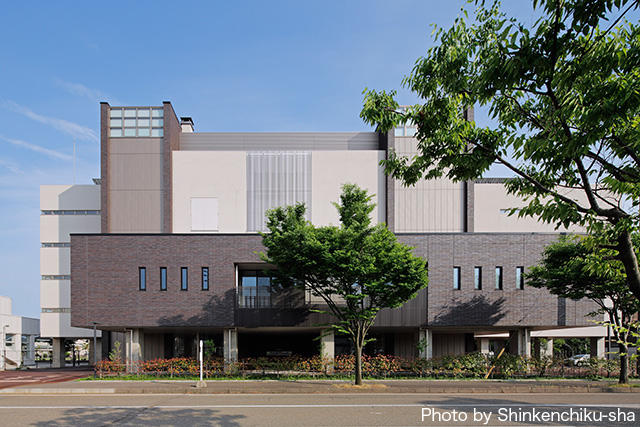
Annual CO2 emissions have been reduced by over 30% compared with an ordinary building by incorporating
illumi-nation design based on an index of "perceived brightness," as well as a system that cuts electric power
in coordination with locking of unit doors, use of LED lighting in all areas, auto-matic lighting activation using
human perception sensors, natural lighting and ventilation systems, and other features.
The facility received the Chairman's Award in the private sector category for the FY2014 Cogeneration
Grand Prize(*1)awards in recognition of its BCP-compliant power supply system making active use of
renewable energy.
*1 Held by the Advanced Cogeneration and Energy Utilization Center Japan
Ecosystem protection at the river gate construction project
The Nikko River Lock Gate is positioned at the mouth of the Nikko River, which runs into Ise Bay. The gate plays an impor-tant role in reducing the damaging effects of floods and high tides. In a project to rebuild the gate, the construction zone was adjacent to the Fujimaehigata tidal flat, which is regis-tered under the Ramsar Convention. We therefore took measures to protect the environment by considering the ecosystem of the flora and fauna living there. We took particular care to ensure that bottom-dwelling organisms that provide food for the birdlife were not affected by water pollution from construction activities.
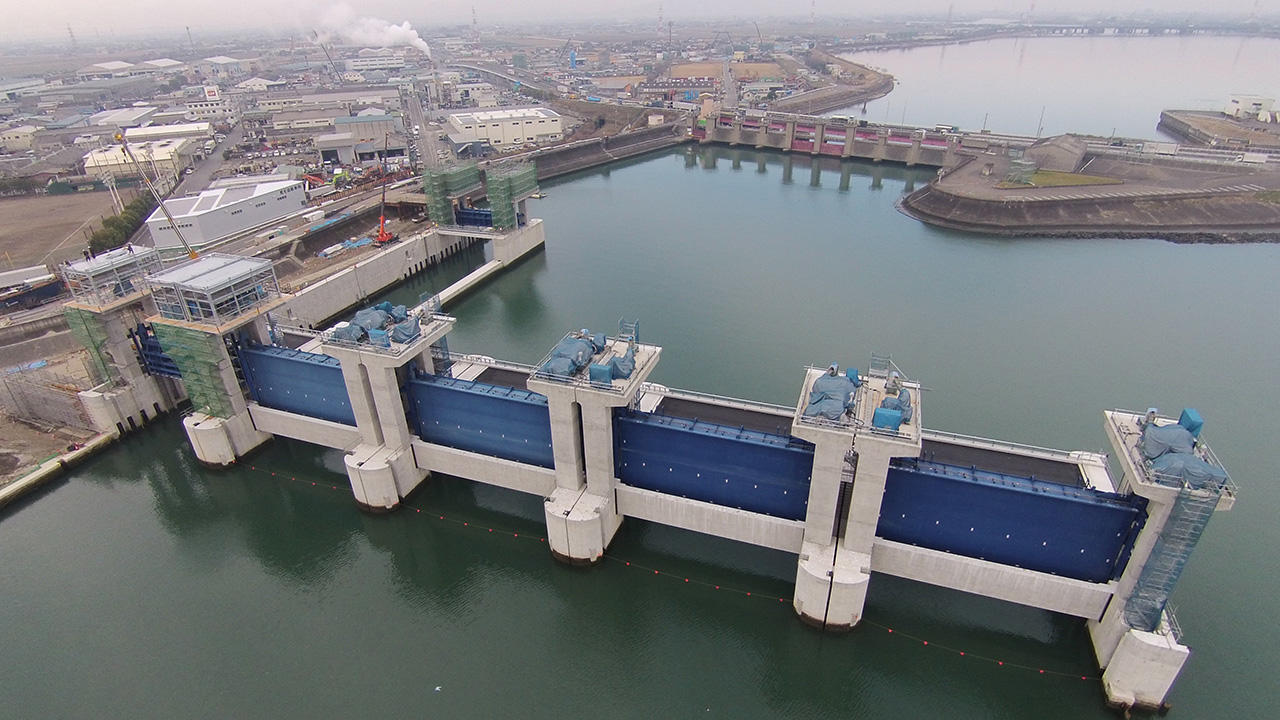
Specifically, we eliminated the need to stop the flow of the river, which can cause pollution, by adopting a hybrid pier construction method. In this method, caissons were built in factories on land beforehand to sidestep processes such as assembling steel frames or concrete molds in the river. Moreover, we prevented water pollution by using piping and a water treatment facility to prevent concrete from falling into the river or leaching out. We also used low-noise and low-vibration construction machinery to minimize the impact on the arrival of migratory birds, reducing noise levels by about 11 dB and vibration levels by about 5 dB.
6th Obayashi Environmental Awards (January 2015)
Desalination project using woodchips
Protective observation of endangered frogs
Removal of salt from salt-damaged farmlands by using woodchips
We have been working together with Tohoku University on an experiment in Iwanuma City,
Miyagi Prefecture for removing the salt from farmlands left with salt damage by the
tsunami in the Great East Japan Earthquake.
In this experiment, we mix disaster-debris woodchips and soil remediation agents into the
farmland, applying a technology that relies solely on rainwater and natural drainage to
remove the salt. After launching the experiment in April 2012, we planted canola seeds in
the soil in October. These seeds sprouted a full bloom of canola flowers in April 2013,
proving the effectiveness of the technology.
Protective Observation and Study of Taipei Green Tree Frogs
A subway system construction site in Taipei, Taiwan sits adjacent to a habitat for the Taipei green
tree frog, a species threatened with extinction.
We are working to ascertain the impact of the construction project by creating six Taipei green tree
frog observed during the survey protective observation ponds and conducting regular surveys in
collaboration with National Taiwan University. The surveys have reported an increase in the number
of Taipei green tree frogs observed from ten in December 2009 to 26 in December 2011.
5th Obayashi Environmental Awards (January 2014)
Clean-Crete: material that reduces CO2 emissions
Use of Clean-Crete
In May 2010, we developed Clean-Crete(*1), a type of concrete that can dramatically reduce CO2 emissions.
We aim to continue devel-oping environmentally friendly concrete while taking steps to promote it
throughout the entire construction industry as part of our efforts to achieve a sustainable society.
*1 A concrete that reduces CO2 emissions by around 80% compared with ordinary concrete by replacing
part of the cement component with industrial by-products such as blast furnace slag from steel-making,
which has low CO2 emissions.
4th Obayashi Environmental Awards (January 2013)
Solar power generation business project
Effective use of non-recyclable waste
Environmentally friendly development
Kumiyama solar power generation business project
As part of our initiative to realize a low-carbon society under our medium-to-long-term vision and current
activities to expand into other business fields peripheral to construction, we have utilized the entire roof
surface area of a newly constructed distribution warehouse in the town of Kumiyama in Kyoto's Kuze district,
to launch a large-scale solar power generation business, effective July 2012. Electric power generated by the
approximately 1,000 kilowatts solar panels is then sold.
The valuable knowledge we obtain on mega solar power generation through this new venture is also proving
valuable when offering support to our customers in the solar power generation business.
Upcycle block development project
The Great East Japan Earthquake generated 18.8 million tons(*1) of disaster debris, raising the issue of
how to dispose of it or reuse it. Obayashi provides technology for the effective use of disaster debris,
and is fully committed to contributing to reconstruction projects in disaster-affected regions, and to
achieving a recycling-oriented society.
Obayashi co-developed(*2) Upcycle Blocks, a safe, high-quality building material that makes effective use
of mixed waste (residual rubble), disaster debris that normally cannot be recycled. Used in seawalls,
wind barrier forests, elevated evacuation sites and road embankments, these blocks reduce the volume
of disaster debris that needs to be processed while providing useful building material.
*1 Annual Report on the Environment, the Sound Material-Cycle Society and the Biodiversity in Japan
2012
*2 Joint development between Advanced Construction Technology Center (ACTEC), Obayashi
Corporation, Kajima Corporation, Kumagai Gumi Co., Ltd., Shimizu Corporation, Taisei Corporation
Environmentally friendly development project at oak omotesando
The former Aoyama Obayashi Building, designed by Kenzo Tange and affectionately known as the Hanae Mori Building, had been a landmark fixture of the Omotesando area for many years. With the passing years and chang-ing times, however, its facilities had become somewhat dated, prompting a decision to rebuild. The construction work involves many of Obayashi's latest techniques, and is progressing smoothly toward its scheduled completion in March 2013. The main technologies in use are as follows:
1. The Hula Mass-Damper System, a vibration deadening system resulting in quake resistance sufficient to reduce building drift by 20% to 40% in earthquakes of magni-tude 6 or higher without damaging the frame, while at the same time permitting a highly flexible layout.
2. Clean-Crete, a low-carbon concrete that produces up to 80% less CO2 emissions during manufacturing compared to normal concrete.
3. ECOLUMI LED lighting, which consumes 55% less power than conventional lights, and OGRID next- generation grid-system ceilings that are fitted with Skit Air compact air conditioning units and can be easily adapted to changes in office layout.
The rooftop garden installed at the oak omotesando building recreates the area's original vegetation, attracting birds and insects. This is the first rooftop green space to be independently JHEP* certified by the Ecosystem Conservation Society Japan, in recognition of its efforts to address biodiversity. * JHEP (Japan Habitat Evaluation and Certification Program) is a system for evaluating and certifying initiatives to protect and restore biodiversity.
3rd Obayashi Environmental Awards (January 2012)
Environmentally friendly facilities management
Relocating living creatures
Environmentally friendly facilities management at Art Village Osaki Central Tower
This building in Tokyo's Shinagawa City was originally designed and constructed by Obayashi
as an energy-efficient building. One of the Group companies, Obayashi Property Management
Corporation*, which handles building management and operations, is continuing initiatives that
fully utilize the building's performance in partnership with building occupants in order to
achieve even greater energy efficiency.
By setting air conditioning and lighting based on the actual outdoor environment and the
building's operating conditions, we were able to generate energy savings while maintaining a
comfortable environment for occupants.
CO2 emissions compared to a normal building were 29% lower in fiscal 2007 when the
building was first completed, but thanks to these measures the figure was boosted further to
46% in fiscal 2011.
* Obayashi Property Management's facilities operation- and management-related business
was transferred to Group company Obayashi Real Estate Corporation in February 2012.
Campaign to relocate living creatures in connection with construction of the New Tomei Expressway Inagi Tunnel
2nd Obayashi Environmental Awards (June 2010)
Zero-waste-emissions efforts
CO2 emissions reduction at tunnel construction
Ultimate zero-waste-emissions efforts during construction work on the NEC Corporation's Tamagawa Solution Center
Use of the URUP method to reduce CO2 emissions from construction work
1st Obayashi Environmental Awards (June 2009)
Landscape plan of Rokka Forest Project
Landscape plan of Rokka Forest Project
"Rokka Forest Project" was a grand plan to build a factory of "Marusei-Butter-Sand", the
signature product of Rokkatei, and to develop its spacious premises. About 10 years ago,
Rokkatei purchased an approximately 25-acre land which was located about 20 minutes from
the Obihiro Airport by car. Although the land was barren, the beauty of Sanbangawa River and
naturally grown trillium were extremely attractive. Rokkatei appointed Obayashi to design and
construct their factory as well as to landscape the premises.
Mr. Yutaka Oda, President of Rokkatei is well-versed in architecture. He is also an aggressive
promoter of environmental conservation in Hokkaido. The project was to respond to his desire
to bring back the nature to what it used to be and to revitalize the land. For the first year, the
project team conducted thorough research on the surrounding vegetation and the geological
history by visiting the site a number of times. A creek bed that they found through the research
gave them an excellent idea of regenerating the creek and re-growing the plants around it.
Adopting this idea, the team considered and reviewed landscape designs many times and then
decided on a master plan that focused on the creek and a pond.
In an attempt to revive the sizable natural forest, we first created a creek surrounding the
isolated woods, and then created a green corridor alongside the creek. With the stream of
water back in place, waterside grasses and flowers were resuscitated.
Currently, we can see a variety of wild plants including the red blooms of Rugosa Roses that
are designed on Rokkatei's wrapping paper. Small wild animals also have returned to the
waterside. We will keep working on this project for a long time.
The project probably has no ending. To meet customer's expectations, Obayashi will continue
to tackle our tasks of conserving and regenerating nature and environment.


